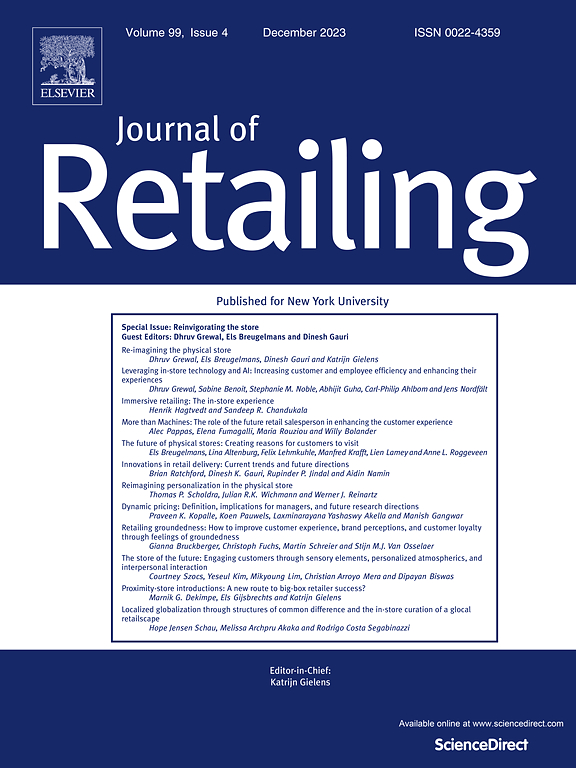Usage complementarity vs. basket co-occurrence: Discount depth reliance in digitally personalized product recommendations
IF 10.2
1区 管理学
Q1 BUSINESS
引用次数: 0
Abstract
The present research investigates how recommending products based on usage complementarity versus basket co-occurrence affects consumers’ purchase decisions. Across seven studies, we find that recommending products based on purchase co-occurrence leads consumers to overly rely on discount depth while neglecting the base price. However, recommending products based on usage complementarity attenuates this tendency. We propose that this occurs because, when products are highly complementary, consumers adopt a comprehensive (vs. topical) mental account that evaluates price information more holistically, considering both discount depths and base prices, thereby reducing the processing bias such as base price neglect. Consistent with our proposal, we find that usage complementarity mitigates another type of processing bias—arising from consumers’ motivation to justify hedonic (vs. utilitarian) purchases—indicating that complementarity promotes a more comprehensive approach to price evaluation. We also find that complementarity triggers a processing style similar to the analytical processing style associated with prevention orientation (vs. promotion orientation), which involves comprehensive price evaluations.
使用互补性vs.购物篮共生:数字化个性化产品推荐中的折扣深度依赖
本研究探讨基于使用互补性和购物篮共现性的产品推荐如何影响消费者的购买决策。在七项研究中,我们发现基于购买共现的产品推荐导致消费者过度依赖折扣深度而忽略了基本价格。然而,基于使用互补性推荐产品会减弱这种趋势。我们认为,这是因为当产品具有高度互补性时,消费者会采用一种全面的(相对于局部的)心理账户,更全面地评估价格信息,同时考虑折扣深度和基本价格,从而减少加工偏差,如忽略基本价格。与我们的建议一致,我们发现使用互补性减轻了另一种类型的加工偏差,这种偏差源于消费者为享乐主义(与功利主义)购买辩护的动机,这表明互补性促进了更全面的价格评估方法。我们还发现,互补性引发了一种类似于预防导向(相对于促销导向)相关的分析式处理方式的处理方式,其中涉及全面的价格评估。
本文章由计算机程序翻译,如有差异,请以英文原文为准。
求助全文
约1分钟内获得全文
求助全文
来源期刊

Journal of Retailing
BUSINESS-
CiteScore
15.90
自引率
6.00%
发文量
54
审稿时长
67 days
期刊介绍:
The focus of The Journal of Retailing is to advance knowledge and its practical application in the field of retailing. This includes various aspects such as retail management, evolution, and current theories. The journal covers both products and services in retail, supply chains and distribution channels that serve retailers, relationships between retailers and supply chain members, and direct marketing as well as emerging electronic markets for households. Articles published in the journal may take an economic or behavioral approach, but all are based on rigorous analysis and a deep understanding of relevant theories and existing literature. Empirical research follows the scientific method, employing modern sampling procedures and statistical analysis.
 求助内容:
求助内容: 应助结果提醒方式:
应助结果提醒方式:


